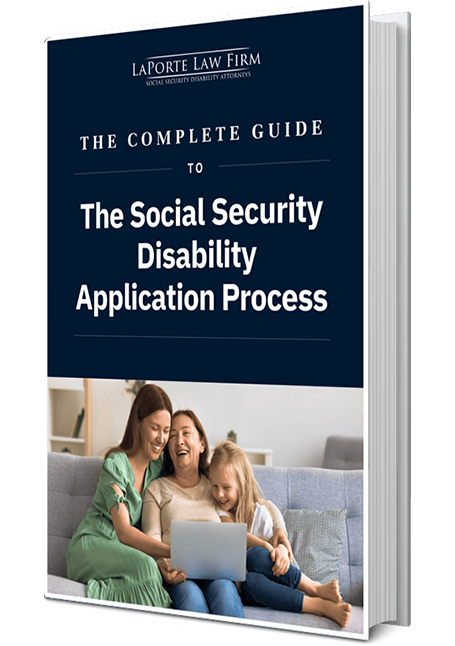
Disability back pay (also known as retroactive benefits) refers to the payments owed to individuals by the Social Security Administration (SSA) for the period between their disability entitlement date and claim approval. Understanding how back pay is calculated and the factors influencing it is crucial for individuals seeking financial support during their disability journey. This knowledge ensures applicants receive the full benefits they are entitled to, bridging the gap between their disability onset and claim approval.
What Is Social Security Disability Back Pay?
Social Security disability back pay is the benefit amount owed to applicants between their established date of disability and when their claim is approved. This payment is meant to compensate beneficiaries for the time they were unable to work due to their disability but were not yet receiving benefits.
Key Points:
- Not all applicants will receive back pay. It depends on individual circumstances and the processing time of the claim.
- If you are approved for SSDI (Social Security Disability Insurance), back pay covers the period from your disability onset date to the approval date.
- If you are approved for SSI (Supplemental Security Income), back pay covers the period from the first full month after your application date to the approval date.
- SSDI and SSI rules for receiving back pay vary. For SSI, back pay is typically paid in three equal installments spaced six months apart, but larger payments may be possible if you need the funds for essential expenses (e.g., housing, medical care). For SSDI, back pay is typically issued as a lump sum and can include benefits dating back to the established onset date of your disability, up to 12 months before your application.
- A lump-sum payment may be available if you are expected to live for less than 12 more months or if you are no longer eligible for SSI but were previously entitled to it.
As of August 29, 2024, SSI applicants no longer need to provide documentation of their expenses to qualify for larger installment payments. Simply stating that the money is needed for necessities will be sufficient.
Factors That Influence Social Security Disability Back Pay Amounts
The amount of Social Security disability back pay, including retroactive payments, depends on several factors. Understanding these factors can help you estimate your potential benefits.
Established onset date
The established onset date, or EOD, is the point when SSA determines you became disabled. This date plays a major role in calculating your retroactive payment.
- For SSDI applicants, back pay may be owed starting from the disability onset date.
- For SSI applicants, back pay starts from the first full month after the application date.
Application submission date
The date you submit your application for disability benefits affects your back pay for both the SSDI and SSI programs.
The SSA can pay retroactive benefits up to 12 months from the date you filed your application in SSDI cases, provided you have already met the five-month waiting period required for disability. In practice, a claimant can be paid for the full 12 months of back pay prior to the month of application if their established onset date is 17 months prior to the date of the application.
The SSA can pay SSI benefits back to the first full month after your application filing date.
Disability approval date
The date your disability is approved by the SSA directly affects your back pay. The average retroactive payment can vary significantly depending on the length of time between the established onset date and the approval date.
In SSDI cases, the retroactive benefits begin after a five-month waiting period, starting from the sixth full month of the established onset date of your disability, not the date of the approval. If your approval takes longer, you may receive a larger back pay amount to cover the extended delay.
In SSI cases, the retroactive benefits begin on the first full month after the application filing date.
Monthly benefit amount
Your monthly benefit amount, which can result in higher monthly benefit payments, is a key factor in determining your back pay. For SSDI cases, the monthly benefit is based on your average lifetime earnings prior to the onset of your disability. Generally, the higher your monthly benefit, the larger your back pay will be.
For SSI, the calculation of your monthly benefit takes into account various financial eligibility factors, including household income and assets during the relevant period. This means your back pay may be affected by the financial circumstances of both you and your family.
Five-month waiting period
SSDI benefits are generally available once the mandatory waiting period has passed, provided the applicant remains disabled and their application is approved. If your claim is approved after the waiting period has ended, you may be eligible for back pay to cover the time you were waiting for your application to be processed. The maximum back pay period, prior to the application date, is 12 months. Back payments are typically issued as a lump sum once you are approved, but attorney or advocate fees are usually deducted from this amount.
In some cases, the SSA may determine that your established onset date occurred earlier than your application date, making you eligible for retroactive benefits that begin prior to your application date. Applicants may be eligible to receive benefits for up to 12 months before their application date. However, the five-month waiting period still applies to the retroactive benefits. This means that, to qualify for retroactive benefits, your EOD must be at least 17 months before the application date.
For example:
- If the SSA determines your EOD was two or three years before your application date, you could be eligible for retroactive benefits for the full 12 months prior to your application date. This is because the 24- or 36-month period exceeds the 17-month limit, so subtracting the 5-month waiting period will result in the maximum 12 months of retroactive pay.
- Alternatively, if the SSA determines your EOD was 10 months before your application date, you would qualify for 5 months of retroactive benefits (10 months minus the 5-month waiting period).
It is also important to remember that the SSA may use your protective filing date (PFD) instead of the actual application date to backdate your payments. The PFD is the date Social Security becomes aware that you plan to apply for benefits, even if you haven’t formally submitted your application yet.
SSI benefits, on the other hand, are not subject to the same five-month waiting period as SSDI benefits. SSI benefits become available the month after your application is approved. However, SSI recipients are still eligible for back payments, which cover the period from the application date to the approval date.
Work history
Your work history, including how much you pay Social Security taxes, affects your SSDI back pay amount. The more you have worked over your life and paid into Social Security, the higher your monthly benefit and potential back pay.
Dependents
If you have dependents, they may be eligible for benefits, increasing the total back pay amount you receive.
Eligibility for Social Security Disability Back Pay
To qualify for Social Security disability back pay, you must meet specific criteria related to your disability and the timing of your claim.
Recent legislative changes, such as the Social Security Fairness Act, have also impacted eligibility criteria for back pay.
Must have a disabling condition
You must have a medically verified disabling condition that prevents you from working.
You can read some of our past blog posts to learn more on how to qualify:
Must have worked long enough
You need to have worked and paid into the Social Security system for a certain amount of time to be eligible for Social Security retirement benefits and disability back pay. In general, if you are over age 31, to qualify for Social Security benefits, you need to earn a minimum of 40 Social Security credits. These credits are accumulated through working and paying Social Security taxes.
While the number of credits you have doesn’t impact the amount of benefits you receive, the SSA uses them to determine your eligibility for retirement or disability benefits, Medicare, and survivor benefits for your family. If you don’t have enough credits, you won’t be eligible for benefits.
Must have an approved Social Security disability claim
The back pay is calculated from the date of the onset of your disability to the approval of your claim (for SSDI cases) or from the month after the filing of your SSI claim to the date of the approval.
Must have fulfilled the waiting period requirement
There is a five-month waiting period from the date of your disability onset before you can start receiving benefits. As explained earlier, this waiting period must be fulfilled for eligibility for back pay.
Disability must last at least a year
Your disability must be long term, expected to last a year or more, or expected to result in death. Short-term or partial disabilities do not qualify for back pay.
Delay in claim processing
If there was a delay in processing your claim, you might be eligible for back pay. This is because the Social Security Administration considers the time it takes to process your claim.
Must be younger than retirement age
You must be younger than your full retirement age to qualify for disability benefits and back pay.
Once you reach full retirement age, your disability benefits automatically convert to retirement benefits.
How to Calculate Social Security Disability Back Pay
In calculating Social Security disability back pay, the SSA follows the process outlined below:
- The SSA sets your EOD, marking the date when you became disabled. Keep in mind that the five-month waiting period begins from the EOD, which affects when benefits begin.
- The SSA calculates the months of back pay. They subtract the five-month waiting period from the total months between your EOD and approval date.
- The SSA calculates your monthly benefit based on lifetime average earnings.
- To yield get the total back pay amount, the SSA multiplies the months of back pay by your monthly benefit amount: This multiplication yields the total back pay amount.
Take note of the maximum back pay period. The SSA allows back pay for up to 12 months before your application date, regardless of the duration of disability.
Also, consider any deductions or offsets. Potential deductions for other benefits received, such as workers’ compensation or State Disability Insurance benefits, should be accounted for when calculating back pay.
For more information or questions about your eligibility for SSDI or SSI benefits, reach out to LaPorte Law Firm. We’re here to help you navigate the disability process.
FAQs
The maximum back pay can be up to 12 months before your application date, subject to the five-month waiting period.
Yes, the maximum is determined by the 12-month limit and individual circumstances such as the established onset date and whether you are receiving SSDI or SSI benefits.
The onset date determines the starting point for back pay calculations.
It is based on the EOD, waiting period, monthly benefit amount, type of benefits (SSDI vs. SSI), and any deductions.
Disability back pay may be taxable depending on your overall income and filing status.















